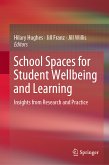With attention to the post-COVID-19 context, the comparative analysis of two campuses, The University of North Carolina (UNC) at Chapel Hill and the University of Georgia, offers insight into how historical context, location, and design all influence the use of space. The case studies and analysis also serve as examples of how institutions and university systems hoping to engage with design practices can promote positive learning environments that are both inclusive and supportive. Each chapter addresses an experiential aspect of space, linking back to the dialogue on diversity, inclusion, and identity. In addition to considerations around diversity, the book also offers a rich narrative that uncovers the links between American Education and the New Southern Republic, shining a light on the role of place, historical origin, and socio-political circumstances in shaping campus design.
A superb resource for scholars and postgraduates studying higher education, environmental psychology, and urban planning, it chronicles the evolution of campus design at public institutions of higher education from a unique historical perspective.
Dieser Download kann aus rechtlichen Gründen nur mit Rechnungsadresse in A, B, BG, CY, CZ, D, DK, EW, E, FIN, F, GR, HR, H, IRL, I, LT, L, LR, M, NL, PL, P, R, S, SLO, SK ausgeliefert werden.









